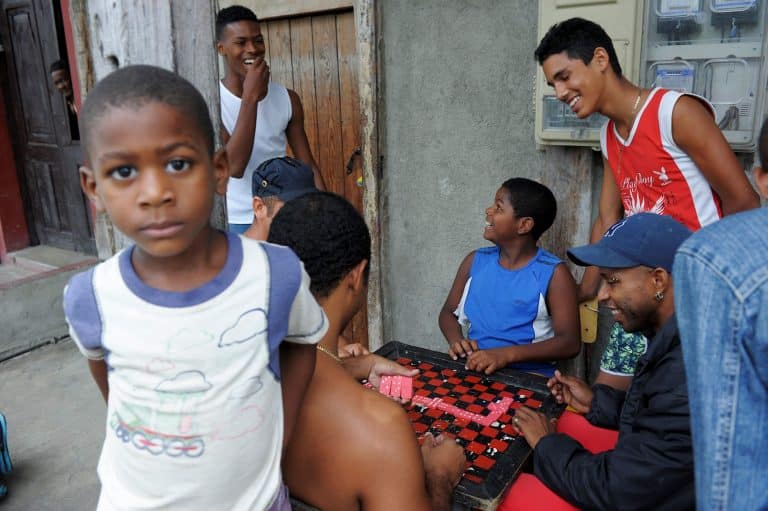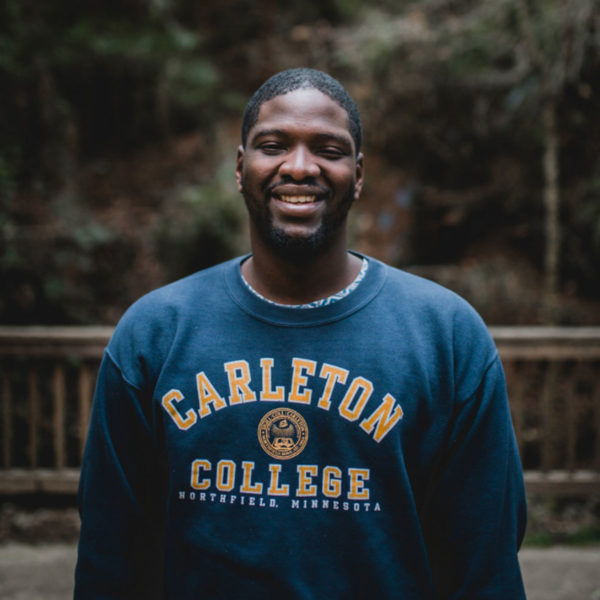
Image by Yamil Lage/Getty Images, © All Rights Reserved.
Blackness Is Not a Monolith
Growing up black in the U.S., from a young age, you learn that your skin color is threatening to the white gaze. Through lived experience, you master the ability to discern the looks given to you by people that don’t resemble you.
In January, I spent two weeks in the Dominican Republic visiting my girlfriend, who lives in Santo Domingo. As a dark-skinned African American traveling in the Dominican Republic, no one once questioned my identity. In their eyes I was Dominican — until I spoke Spanish, and they’d learn that I wasn’t. While no one could discern me, I felt uneasy walking around the city with Dominican girlfriend, whose skin tone is very fair in comparison to my dark complexion. By black American standards, some wouldn’t consider her black, and in the Dominican Republic, she is lighter than many Dominicans.
My girlfriend is not white passing, however, and proudly identifies as Afro-Latina. Her mom’s side of the family is unmistakably black, while her dad’s side of the family has Spanish genes. As she showed me around the island, everywhere we went — restaurants, bars, and tourist attractions — people would stare at us. It wasn’t a violent stare, but rather eyes of intrigue, and at times, eyes of judgment. People were curious about our relationship. I imagined they were thinking, “Why would this fair skinned girl be with this dark-skinned guy?”
In the last year, there have been debates on Twitter about whether or not Dominicans are “black.” There’s a vocal black American camp that is quick to claim that “Dominicans are black,” and a Dominican camp that has consistently responded, “I’m not black, I’m Dominican.” To further complicate matters, there’s also a constituent of Dominicans who proudly identify as black or Afro-Latino that have stated that Dominicans are black. I myself am not Dominican. However, as a first-generation African-American from Cameroon who recently visited the Dominican Republic, I couldn’t let this conversation go by without sharing some of my observations.
The Dominican Republican was once native to an indigenous group called the Taíno, who were nearly wiped out a few centuries ago. Many Dominicans have Taíno blood, but the island is primarily a mulatto country. Roughly 73 percent of the Dominican Republic’s population is mixed race, 16 percent White European, with black Africans tallying the final 11 percent. Mulattos are black; it’s simply that their lived experience of blackness is different from that of their darker brethren. Similarly, because they’re both white and black, mixed-black Americans express their blackness very different from darker-skinned black Americans. They’re not seen as black enough for the black crowd, nor white enough for the white crowd. This same phenomenon exists in the Dominican Republic, except, in the case of most Dominicans, they are tri-racial.
The stares my girlfriend and I received as we were walking around the island weren’t violent, but they forced me to be conscious of my presence in spaces. As I grew more aware of my surroundings, I recognized that I was often the only dark-skinned person in the spaces we were in. This realization left me woeful; because when I looked outside there were a handful of dark-skinned Dominicans roaming the streets. They were present, yet there was a subtle racism that excluded them — that rendered them invisible.
I soon grew tired of being observed, so one evening I asked my girlfriend’s parents about race in the Dominican Republic. I was curious to learn about their experience as an interracial couple. Her dad’s response to my question was both intriguing and very telling. He told me, “Here in the DR, our racist attitudes are more attributed towards Haitians that illegally come into the country. The Dominican Republic is a black country, but we’re mostly mulatto. You’ll find dark Dominicans like yourself, and white Dominicans, even whiter than me — blacks are a part of our society, but there have been efforts in our past to sever our ties with them and our African ancestry. Black Dominicans are not silenced or neglected. They are simply not embraced.”
Black Dominicans may not be neglected, but through the lack of embracing their presence in the country, they have been silenced. The Dominican Republic has a caste system not too different from India or South Africa. Each of these countries suffers from colorism, the discrimination of dark-skinned individuals. In colorist societies like the Dominican Republic, the lighter you are the better your prospects of social mobility, the darker you are the harder your path will be to middle-class status.
Blackness is not a monolith — it is a complexly rich and beautiful identity that is uniquely expressed worldwide. Blackness in the U.S. won’t look the same in Ghana, which will look starkly different from blackness celebrated in Brazil, which will look very different from blackness in Europe or even in Asia. While most Dominicans identify as Latino or Latinx, the Dominican Republic is a tri-racial country with African ancestry, where blackness, despite often being suppressed, is very present throughout the island. Their blackness lives on through their music, dance, food, fashion, and lively ambiance. Dominicans are black, it’s just complicated.


Share your reflection